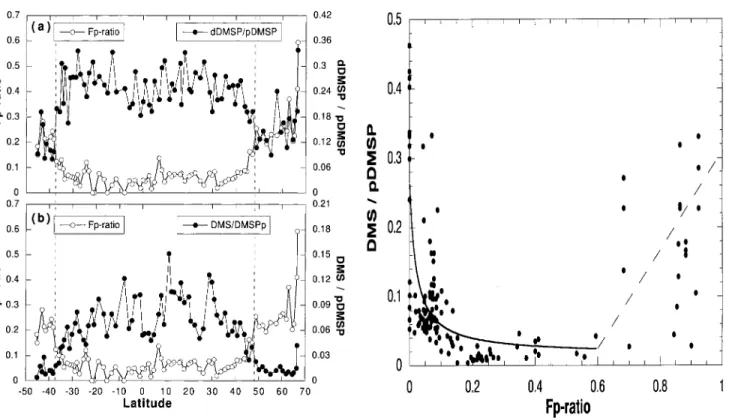Dimethylsulfoniopropionate (DMSP) and dimethylsulfide (DMS) sea surface distributions simulated from a global three-dimensional ocean carbon cycle model
Texte intégral
Figure

![Figure 6. Annual mean distribution of surface chlorophyll (in mg Chl m 3 ) showing (a) observations from the CZCS [Feldmann et al., 1989] and (b) results of IPSL-OCCM2](https://thumb-eu.123doks.com/thumbv2/123doknet/13043499.382593/9.888.76.436.93.620/figure-annual-distribution-surface-chlorophyll-showing-observations-feldmann.webp)


Documents relatifs
The present research is the first, to the best our knowledge, to examine the properties of Bitcoin with respect volatility, speculation, efficiency and its usefulness as
– le premier comporte un ´etat de l’art sur les estimateurs d’erreur globale et les estimateurs d’erreur locale pour les probl`emes de statique et de dynamique ; – le deuxi`eme
Dans les chapitres précédents, nous avons démontré qu’il était possible de fonctionnaliser des échantillons de polypropylène en immobilisant à la surface, soit de la
Applying this model to membranes with created selective pores, it is predicted that by proper choice of the support membrane beneath graphene or adequate leakage sealing,
The {Ni}, (i=O,...,u) coefficients of the transfer matrix numerator polynomial are asymptotically determined from the linear dependence exhibited by the corresponding
These results clearly confirm that the strongest subsidence, responsible for the enhanced free tropospheric tracer concen- trations near ground, occurs over the Mediterranean basin,
However, heat accumu- lated in the barrier layer in the eastern AS warms the surface layer by 0.4°C (Table 2). Meanwhile, no barrier layer develops in the western AS and vertical
A number of modelling studies have addressed the connection between NAO and North Atlantic Ocean carbon cycle utilising global ocean general circulation models (McKinley et al.,